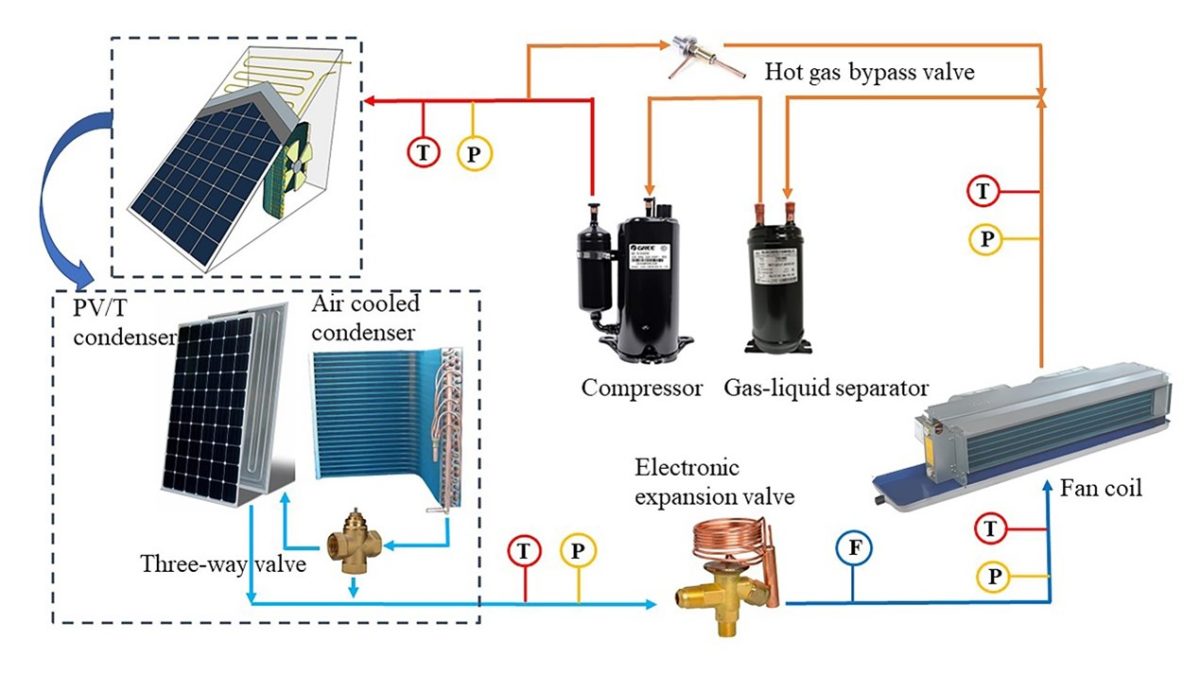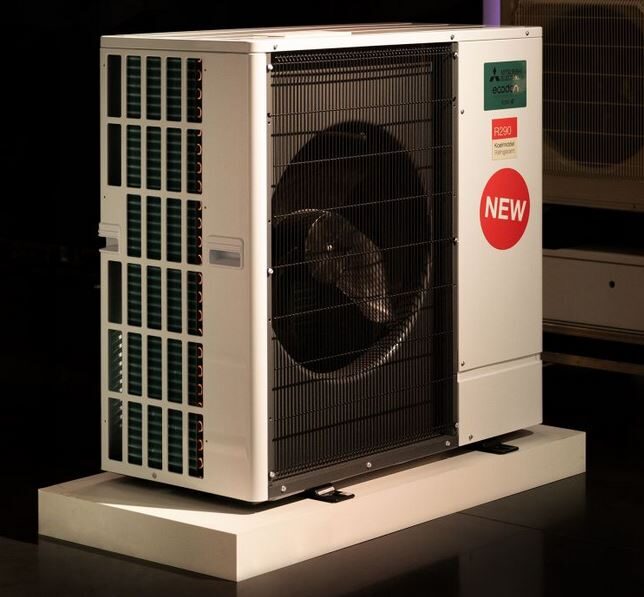Researchers from Hebei University of Technology in China have designed a photovoltaic-thermal air conditioning system that uses an air-cooled condenser and a PV/T condenser combined in series.
The novelty of the system consists of using these two components instead of the commonly used PV/T heat exchanger as the condenser.
“When solar energy and long-wave radiation energy resources are available, the proposed system is suitable regardless of the type of buildings,” researcher Man Fan told pv magazine. “The system performance is improved by the complementary utilization of solar energy, air energy and long–wave radiation energy.”
The PV/T condenser generates power during the day and assists the air–cooled condenser for heat dissipation during the night. The system features an evaporator and condenser, a compressor, an electronic expansion valve (EEV), a four–way reversing valve, a gas– liquid separator, and a hot gas bypass valve. It uses a refrigerant known as R410.
“A bypass pipe is set between the air-cooled condenser and PV/T condenser,” the scientists explained. “By controlling valves near the bypass pipe, the system can be converted between the air-cooled PV/T air conditioner and conventional air-cooled air conditioner.”
By opening and closing the three valves, the system can operate as an air–cooled PV/T air conditioner or as a conventional air–cooled air conditioner.
“The switch of air-cooled air conditioning system and air-cooled PV/T air conditioning system mainly depends on the condensing effect of PV/T exchanger,” said the research group.
The PV/T condenser consists of a PV plate, an aluminum plate with dimensions of 1580 mm × 810 mm × 2 and 8 mm copper tubes from top to bottom. The aluminum plate is attached to the back of PV plate, and copper tubes are welded on the aluminum plate. The air-cooled condenser consists of a fan and fa 8 mm finned tube heat exchanger. The PV panel used for the system has an area of 1.28 m2, a rated output of 200 W and a power conversion efficiency of 19.1%.
The academics measured the performance of the system by using Evap-Cond, which is a software program that offers simulation models for finned-tube evaporators and condensers. They found that the heat dissipation rate of system condenser is “positively “correlated with outdoor wind speed, refrigerant flow rate and inlet temperature, and “negatively” correlated with solar irradiance and outdoor temperature.
“When the refrigerant flow rate increased from 10 kg/h to 50 kg/h, the heat dissipation rate increased by 3.9 times, and the maximum value was 3,116.2 W,” they explained “While under other conditions, the heat dissipation rate merely changed by 2.9% to 10.3% with an average value of 3,064.8 W.”
They also ascertained that the system cooling capacity at night is about 7.1% and 42.3% higher than that on a cloudy and sunny day, respectively, and that the system coefficient of temperature (COP) is between 2.9 to 4.1, which is approximately 20.0% and 123.7% higher than that on a cloudy and sunny day.
“The air-cooled PV/T air conditioning system was suggested to be operated when the solar irradiance was not higher than 200 W,” they said. “The increase in solar irradiance and outdoor temperature were both unfavorable to the system cooling and power cogeneration performance.”
The researchers introduced the system in “Simulation of air-cooled PV/T air conditioning system for cooling and power cogeneration,” which was recently published in Applied Thermal Energy.
This content is protected by copyright and may not be reused. If you want to cooperate with us and would like to reuse some of our content, please contact: editors@pv-magazine.com.




1 comment
By submitting this form you agree to pv magazine using your data for the purposes of publishing your comment.
Your personal data will only be disclosed or otherwise transmitted to third parties for the purposes of spam filtering or if this is necessary for technical maintenance of the website. Any other transfer to third parties will not take place unless this is justified on the basis of applicable data protection regulations or if pv magazine is legally obliged to do so.
You may revoke this consent at any time with effect for the future, in which case your personal data will be deleted immediately. Otherwise, your data will be deleted if pv magazine has processed your request or the purpose of data storage is fulfilled.
Further information on data privacy can be found in our Data Protection Policy.